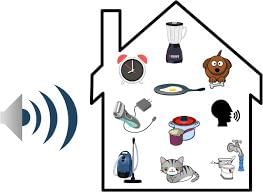Year 4 Exam > Year 4 Notes > Year 4 Science > How are sound detected and made?
How are sound detected and made? | Year 4 Science PDF Download
Detection of Sounds
Sounds are detected as the vibrations from the environment enter our ears and transmit signals to the brain.

The Anatomy of the Ear
- The ear plays a crucial role in capturing sound vibrations and translating them into signals that the brain can interpret.
- It consists of various components that work together to facilitate the hearing process.
Propagation of Sound
- Sound waves have the ability to travel through different mediums, including solids (like metal, stone, and wood), liquids (such as water), and gases (like air).
- Characteristics of Sound Waves: Sound waves exhibit the property of traveling through various materials, demonstrating the versatile nature of sound transmission.
Sound is vibrations
- Sound Origin: Sound is produced by the vibration of objects. When objects vibrate, they cause the surrounding air to vibrate as well. These vibrations then travel through the air and reach our ears.
- Versatile Travel: Sound waves are not limited to air; they can also travel through different mediums like solids (e.g., metal, stone, wood), liquids (e.g., water), and gases (e.g., air).

Question for How are sound detected and made?Try yourself: What is the origin of sound?View Solution
The document How are sound detected and made? | Year 4 Science is a part of the Year 4 Course Year 4 Science.
All you need of Year 4 at this link: Year 4
|
20 videos|25 docs|10 tests
|
FAQs on How are sound detected and made? - Year 4 Science
| 1. How are sound waves detected by the human ear? |  |
Ans. Sound waves are detected by the human ear through the vibration of the eardrum. The eardrum vibrates in response to the sound waves and this vibration is then transmitted through the middle ear bones to the inner ear where it is converted into electrical signals that are sent to the brain for interpretation.
| 2. What are some common methods used to detect sounds in the environment? |  |
Ans. Some common methods used to detect sounds in the environment include microphones, which convert sound waves into electrical signals, and sensors that can detect vibrations caused by sound waves. Additionally, animals such as dogs and marine mammals have highly sensitive hearing that allows them to detect sounds in their environment.
| 3. How is sound produced by musical instruments detected by the human ear? |  |
Ans. Sound produced by musical instruments is detected by the human ear in the same way as any other sound. The vibrations created by the instrument cause sound waves to travel through the air and reach the ear. The ear then processes these sound waves and sends signals to the brain for interpretation.
| 4. Can sound be detected in outer space? |  |
Ans. Sound cannot be detected in outer space because it requires a medium, such as air or water, to travel through. In the vacuum of space, there is no medium for sound waves to travel through, so sound cannot be detected.
| 5. How do sound detection devices, such as sonar and ultrasound machines, work? |  |
Ans. Sound detection devices such as sonar and ultrasound machines work by emitting sound waves and then detecting the echoes that bounce back. Sonar is used in underwater navigation and communication by emitting sound waves that bounce off objects in the water, while ultrasound machines use high-frequency sound waves to create images of the inside of the body for medical purposes.
Related Searches















